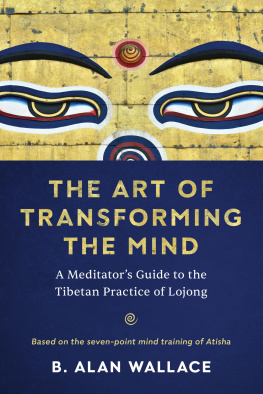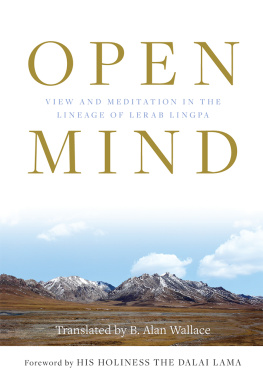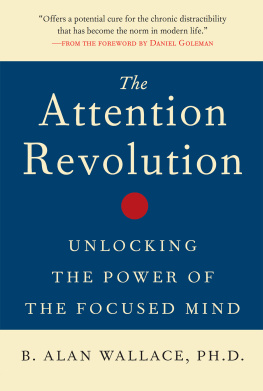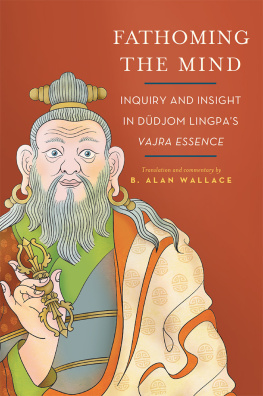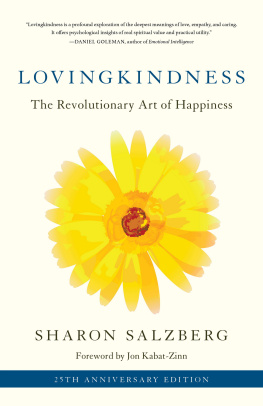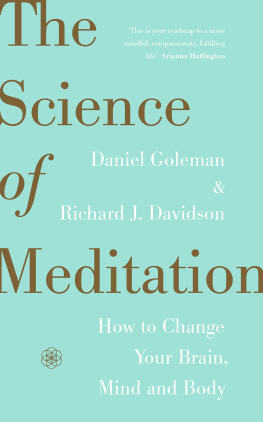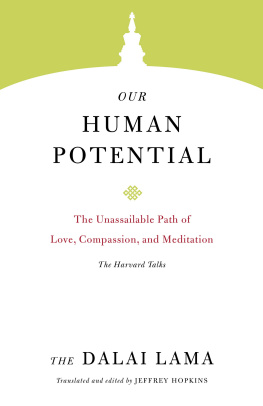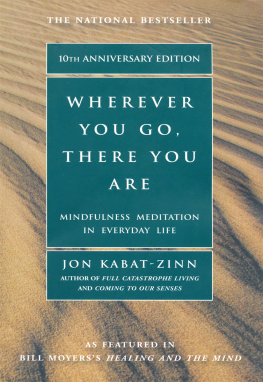Genuine Happiness

Genuine Happiness
Meditation as the
Path to Fulfillment

B. Alan W ALLACE
Foreword by His Holiness the Dalai Lama

John Wiley & Sons, Inc.
Copyright 2005 by B. Alan Wallace. All rights reserved
Published by John Wiley & Sons, Inc., Hoboken, New Jersey Published simultaneously in Canada
No part of this publication may be reproduced, stored in a retrieval system, or transmitted in any form or by any means, electronic, mechanical, photocopying, recording, scanning, or otherwise, except as permitted under Section 107 or 108 of the 1976 United States Copyright Act, without either the prior written permission of the Publisher, or authorization through payment of the appropriate per-copy fee to the Copyright Clearance Center, 222 Rosewood Drive, Danvers, MA 01923, (978) 750-8400, fax (978) 646-8600, or on the web at www.copyright.com. Requests to the Publisher for permission should be addressed to the Permissions Department, John Wiley & Sons, Inc., 111 River Street, Hoboken, NJ 07030, (201) 748-6011, fax (201) 748-6008.
Limit of Liability/Disclaimer of Warranty: While the publisher and the author have used their best efforts in preparing this book, they make no representations or warranties with respect to the accuracy or completeness of the contents of this book and specifically disclaim any implied warranties of merchantability or fitness for a particular purpose. No warranty may be created or extended by sales representatives or written sales materials. The advice and strategies contained herein may not be suitable for your situation. You should consult with a professional where appropriate. Neither the publisher nor the author shall be liable for any loss of profit or any other commercial damages, including but not limited to special, incidental, consequential, or other damages.
For general information about our other products and services, please contact our Customer Care Department within the United States at (800) 762-2974, outside the United States at (317) 572-3993 or fax (317) 572-4002.
Library of Congress Cataloging-in-Publication Data:
Wallace, B. Alan.
Genuine happiness : meditation as the path to fulfillment / B. Alan Wallace; foreword by H.H. the Dalai Lama.
p. cm.
Includes bibliographical references and index.
ISBN 0-471-46984-X (cloth)
1. Anapanasmrti. 2. MeditationBuddhism. I. Title.
BQ5630.A6W35 2005
294.34435dc22
2004027098
Printed in the United States of America
10 9 8 7 6 5
Contents

PART ONE
Refining the Attention
PART TWO
Insight through Mindfulness
PART THREE
Cultivating a Good Heart
PART FOUR
Exploring the Nature of Consciousness
Foreword by His Holiness
the Dalai Lama

Meditation is an instrument or technique to shape or transform the mind. According to my own meager experience of meditation as a simple Buddhist monk, as I get older, even though many of the problems I face become more serious and my responsibilities become more challenging, my mind is becoming calmer. The result of a calmer mind is that I am happier. When faced with problems, my peace of mind is largely undisturbed. This is certainly the result of meditation.
Meditation is important as a tool for transforming the mind. We do not have to think of it as something religious. Like compassion and the spirit of forgiveness, I would include it among our basic good human qualities. When we are born we are quite free from ideology, but we are not free from the need for human affection. Compassion, love and forgiveness, the spirit of harmony, and a sense of brotherhood and sisterhood are all taught by our religious traditions. And yet this does not mean that if you accept the value of compassion or forgiveness then you must take up religion as a whole. Meditation is the same; we can use it as a means of strengthening our basic good human qualities.
Generally speaking, our awareness is normally attracted toward physical sensory experiences and mental concepts. With meditation we learn to withdraw our mind inward; we dont let it chase after sensory objects. However, we dont withdraw it so much that it becomes dull. We have to maintain a very full state of alertness and mindfulness so that an awareness of our natural state of mind emerges. This is a state of mind in which awareness is not afflicted by memories and thoughts of the past, nor is it afflicted by thoughts of the future, anticipations, fears, and hopes. Rather, our mind remains in a natural and neutral state.
When we withdraw our mind from external objects, its almost as if we cant recognize it as our mind. There is a kind of absence, a kind of vacuity. However, as we slowly progress and get used to it, we begin to notice an underlying clarity, a luminosity. And thats when we begin to realize and appreciate the natural state of the mind.
Now, the Buddhist tradition of meditation includes many different techniques and practices. But it is very important to be skillful in how we apply them. We need a balanced approach, combining studying and learning with the practices of contemplation and meditation. Otherwise, there is a danger that too much intellectualization will kill the more contemplative practices. But then, too much emphasis on practical implementation without study can kill the understanding.
In this book, Alan Wallace describes a range of meditation techniques from the simplest mindfulness of breathing up to the exalted methods of Dzogchen. From a perspective of long experience of study and practice, he has tried to present these techniques with reference to the universal qualities of the human mind, free from the cultural embellishments that may have become associated with them as they were developed in India, Tibet, and else-where. This is, I believe, entirely appropriate. When the Buddha and other great teachers of the past first gave these instructions, they did not do so in order that only Indians, Tibetans, or Asians should benefit, but in order that all sentient beings should find peace and happiness. It is my prayer, too, that whoever puts these instructions and words of advice into effect may find the tranquility and insight that is their fruit.
September 29,2003
Acknowledgments

This book is based on a series of lectures I gave in Santa Barbara from the autumn of 2000 through the spring of 2001. These lectures were recorded and then transcribed by many volunteers among my students, to whom I am deeply grateful. These raw transcripts were then edited into book form by Brian Hodel, after which I made various changes, which he polished once again. It has been a pleasure working with Brian, and I thank him for his unflagging enthusiasm and skillful editing. The manuscript was then sent to my agent, Patricia van der Leun, who coached me with enormous patience in writing a book proposal and polishing my writing style. It was thanks to her that the manuscript was submitted to John Wiley & Sons, and due to the kind interest on the part of Thomas Miller, executive editor, general interest books, that it was accepted for publication. I have very much enjoyed working with Teryn Johnson, the editor at John Wiley & Sons who line-edited the manuscript and made other helpful suggestions. I am grateful to all those who have contributed to this book, especially my many teachers, including His Holiness the Dalai Lama, Geshe Rabten, and Gyatrul Rinpoche, without whom my life in Dharma and this book that has resulted from it would have been impossible. Finally, I wish to express my thanks for the loving support of my wife, Vesna A. Wallace, and stepdaughter, Sarah, who have brought so much joy to my life.
Next page

